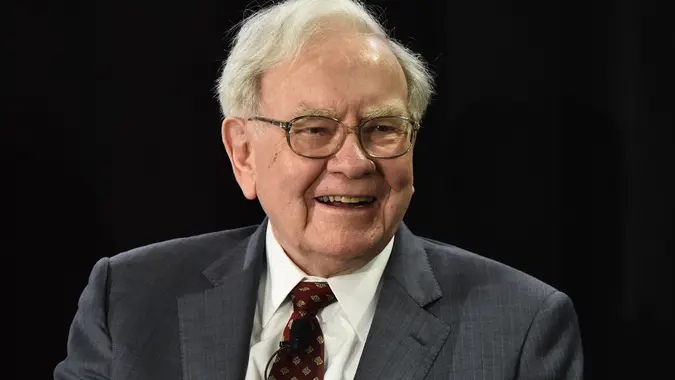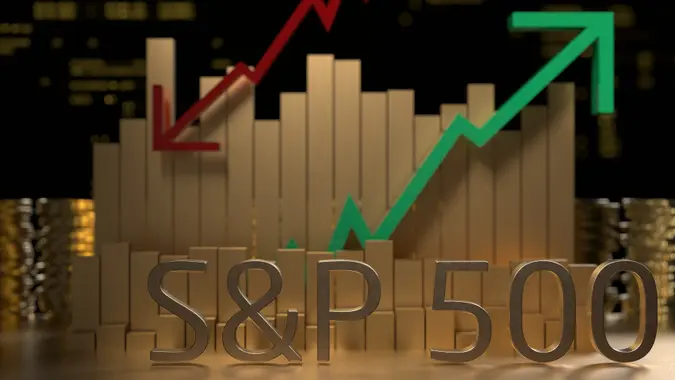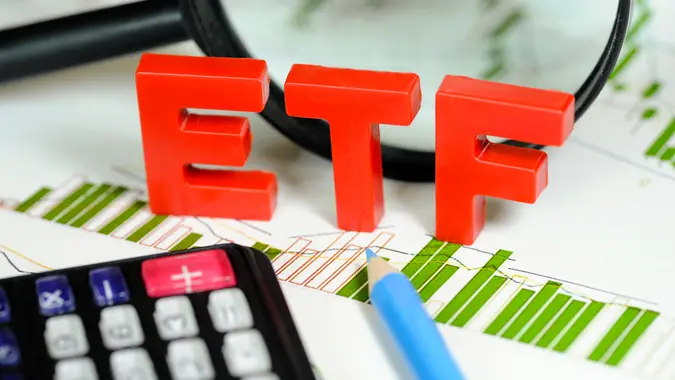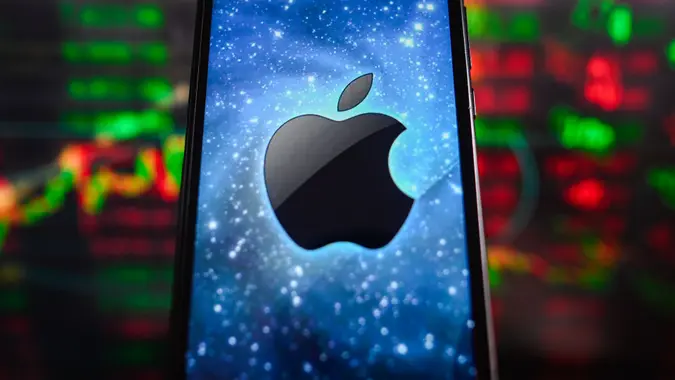Dave Ramsey: If You Invested $10K in These Companies, You’d Be Nearly $16K Richer

Commitment to Our Readers
GOBankingRates' editorial team is committed to bringing you unbiased reviews and information. We use data-driven methodologies to evaluate financial products and services - our reviews and ratings are not influenced by advertisers. You can read more about our editorial guidelines and our products and services review methodology.

20 Years
Helping You Live Richer

Reviewed
by Experts

Trusted by
Millions of Readers
Unlike many finance experts and investors, Dave Ramsey does not recommend investing in S&P 500 stocks. You won’t see names like Apple or Amazon in his portfolio — at least not directly.
Rather, Ramsey recommends investing 15% of your income into tax-advantaged retirement accounts like 401ks, IRAs or Roth IRAs. He advises choosing accounts that invest in mutual funds because of the diversification they provide. And within those investment accounts, choose an equal mix of four types of funds: growth and income, growth, aggressive growth and international.
Here are a few other expert takeaways:
- RamseySolutions.com stated that 8 out of 10 millionaires invest in their company’s 401(k), while 75% of millionaires also had retirement accounts outside what their company offered.
- If you followed Ramsey’s advice a decade ago, putting just $10,000 in a collection of mutual funds, you would have amassed more than $15,000 right now.
- One finance forum revealed a retirement plan election form for a Ramsey Solutions employee. So, let’s assume that Ramsey also invests in these funds, since they follow his best practices for investing.
GOBankingRates chose the $10,000 figure based on the median income in the U.S., which is about $61,937. To make the math easier, $60,000 was plugged in before calculating 15%, which is $9,000. Finally, it was rounded up to get an even figure, which would mean an investment of roughly $2,500 in each of these four funds.
Since it wasn’t possible to purchase fractional shares 10 years ago, rounding off to create a diversified portfolio split evenly four ways would be best. Here’s a closer look at how you could invest using Ramsey’s strategy.
Growth Fund of America
In 2015, Growth Fund of America is, as its name implies, a growth investment centered around U.S. companies, with up to 25% of its assets outside the U.S. Many of the equities in the fund will sound familiar. One-quarter of the fund is made up of technology stocks, with 15% in consumer discretionary companies. Other holdings include healthcare, industrial and financial companies.
Some of the largest cap stocks in the fund include Microsoft, Meta Platforms, Alphabet, and Amazon.
- Price in 2015: $21.50
- Price in 2025: $76.15
Investment Company of America
This mutual fund has a history spanning eight decades and shows a 10-year return of 10.31%. The vast majority (nearly 90%) of its assets are held in U.S. equities, according to CapitalGroup.com. It is classified as a long-term growth and income investment.
Like Growth Fund of America, the Investment Company of America invests in IT, industrial, healthcare, financial and communications, amongst other industries. The largest holdings include Microsoft, Broadcom and Alphabet.
- Price in 2015: $20.15
- Price in 2025: $58.39
New Perspective Fund
The New Perspective Fund fulfills Ramsey’s requirements for international holdings, with investments in 273 companies based across 27 countries, according to CapitalGroup.com. Fifty percent of its holdings are in U.S. equities and 45% are in non-U.S. equities. Top equities include companies in IT, healthcare and the industrial market, and include Microsoft, Novo Nordisk and Meta.
- Price in 2015: $38.61
- Price in 2025: $62.70
American Balanced
American Balanced might be considered the long-term growth stock and the least risky investment in the collection. By focusing on high-quality stocks, the fund offers security and slow growth.
Some of the largest companies in the fund include Microsoft, Gilead Sciences and Canadian Natural Resources.
- Price in 2015: $31.66
- Price in 2025: $34.69
Dawn Allcot contributed to the reporting for this article.
 Written by
Written by  Edited by
Edited by 

























